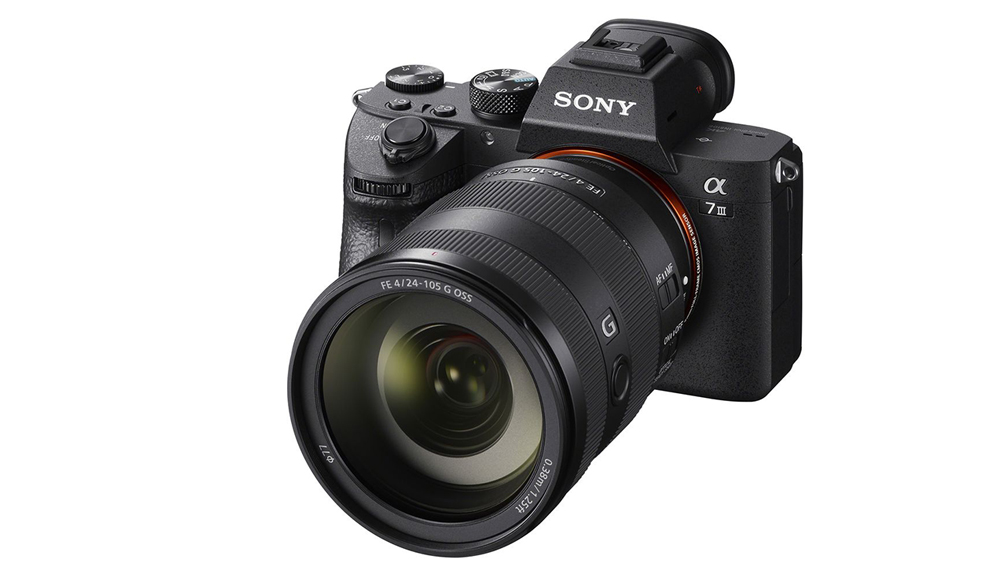Enhanced Resolution, Dynamic Range, Processing Speed, & Shooting Response
Review by Steve Baczewski
The Sony a7R III is a flexible workhorse that rivals the best DSLRs at shooting landscapes, capturing continuous action, and videos. It’s built around the same 42.4-megapixel, BSI CMOS sensor as its predecessor, the a7R II; however, there’s been a major revamping of the sensor’s circuitry, a faster image processor, and the body is modified for faster performance.

At first glance, the body looks the same as the a7R II, but the a7R III now has a joystick for moving the focus point and navigating the menus. Right above the joystick is a back button focus and to the left is the relocated movie button, all within easy reach of your thumb, and designed for faster performance. Sony now boasts that the in-camera 5-axis sensor stabilization is good for up to 5.5 stops. The articulated LCD now incorporates touchscreen technology, but it’s limited to moving the focus point; it lacks such features as swiping images in playback mode, navigating menus, or opening icons that appear on the screen. The EVF has a new 3.69 million dot Quad-VGA OLED for increased detail, and it’s a pleasure to compose with a 0.78 magnification.

Connectivity now includes both USB 2 and USB Type-C ports so you can simultaneously charge the battery and tether the camera. One significant change in the aR7 III is the use of two memory card slots; however, it’s “half-baked” as only one of the slots supports the faster UHS-II SD card—leaves me wondering why not both?
The a7R III’s larger battery is the big game changer with, in my estimation, approximately 3x (Sony states 2x) the life of the a7R II’s battery. I shot for an entire day—800 exposures including several videos—and still had 20% charge remaining.
The main menu is improved, but it’s spread out over 35 pages and in need of tighter and more intuitive organization. The remedy for this is the body’s numerous customizable buttons and quickly accessed function menu. The camera’s performance depends on users taking time to arrange and repurpose the camera to their particular needs.
The a7R III maintains the 399 phase-detection focus points and increases the contrast detection points from 25 to 425 to cover approximately 68% of the screen, which is key to its faster autofocus, and is especially noticeable in low-light situations.
Users can now shoot at 8 or 10 fps with the a7R III, twice the speed of its predecessor, in both compressed and uncompressed 14-bit RAW, using either the mechanical or electronic shutter. At 8 fps your viewing is live, while at 10 fps you’re always seeing the last frame shot, and so a slight lag. Both burst speeds did a reliable job of keeping up with a moving subject. I shot with continuous AF in burst mode photographing sports, birds, moving children, and pets, and on average, 85% were sharp. At times tracking was lost, but the camera quickly re-established the target.

For portrait photographers, the improved Eye AF mode is sensational. It looks for, and then locks on and tracks one of your subject’s eyes. If eye tracking is lost temporarily, the camera reverts to facial recognition while it re-establishes locking onto the eye—very impressive!
The redesigned mechanical shutter reduces shutter shock vibration using a braking mechanism to slow the shutter at the end. Of course, there’s no vibration using the electronic shutter, and it can operate in silence; however, the electronic shutter does suffer from rolling shutter that’s clearly noticeable, as vertical objects are distorted on pans.
Sony has added a Pixel Shift technology that increases file resolution to 169 megapixels by taking four pictures while shifting the sensor one pixel in each direction, which results in images with cleaner, sharper detail. The downside is that the subject has to be totally still, which makes it realistically limited to a controlled studio situation. Unlike other camera manufacturer’s versions of pixel shift that process the image in-camera, Sony’s uses proprietary software, so the entire process is comparatively slow and, to my eyes, not always better than a single 42-megapixel file.
The Sony a7R III is also a sophisticated camera for video. It records full-frame, 4K UHD, or 5K at a reduced APC-size cropped sensor for increased detail. It can shoot 1080p at up to 120 fps, and when played back at 24 fps, you have slow motion. The S-Log3 gamma curves and Hybrid gamma log have been borrowed from Sony’s professional video cameras for optimizing exposure and increasing dynamic range.
The Sony a7R III is one of the top cameras that I’ve used and, with the numerous lenses available, it adds up to a professional system that should be seriously considered. ■






